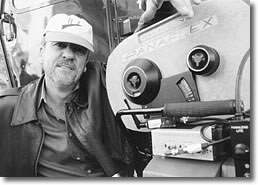


July 2004
by Elaine Zablocki
Comprehensive Group Support
Leads to Pain Relief
Comprehensive pain programs can help us manage pain and dramatically improve
our quality of life, says Stewart Barbee, 57, who lives in Larkspur, California.
Barbee spent three months in the Pain Rehabilitation and Education Program
at the Integrative Medical Center of Santa Rosa, and he says it changed his
life.
The center opened its doors in 2001. The staff includes two family physicians,
one internist, one naturopath, two chiropractors, one acupuncturist, three
neuromuscular educators, two massage therapists, one registered dietician
who also does biofeedback, an herbalist and two psychotherapists.
"We had
planning meetings for about 18 months before we opened," says medical
director Ellen Barnett, MD, PhD. "During that process we identified
medical conditions we thought were particularly amenable to an integrative
team, and
one of them was chronic pain."
The Pain Rehabilitation and Education Program (PREP) is a training program
in which patients learn practical skills in movement, nutrition, and stress
management to enhance healing. At its core is a series of group sessions
in which people who are experiencing chronic pain meet together for five
hours
a day, for eight to twelve weeks. They meditate, have a movement class,
and study anatomy and nutrition together. Each day there's a facilitated
group support session on how we can cope with chronic pain. Each person tells
their story, looks at how their personal history fits together with their
current situation, and creates a book that represents the story of their
pain. Participants
also experience a range of CAM modalities to see which ones are most effective
for them.
PREP isn't a series of treatments to try to "fix" the pain,
says Barnett. The process is designed to help patients identify and nurture
behaviors that support healing and growth, and eliminate patterns that sabotage
their return to health. During individual sessions participants develop specific
personal goals, and track how well they're moving toward those goals.
"When we did evaluations, everyone said the group support was the most
important thing, though other parts of the program also helped," says Barnett. "What
we see is that somewhere during this process the individual changes. They no
longer feel like a victim; they feel empowered. They have the ability to manage
and modulate pain, based on what they choose to do on a minute to minute, day
to day basis." For example, she says, someone can choose to meditate
for fifteen minutes in the morning and have less pain. Or they can choose to
eat
a tempting food, and risk a pain flare.
A program like PREP, which takes so much time and involves so many different
practitioners, is expensive. At this point, worker's compensation is
the only insurance that covers the cost. It's a pity, because patients
with chronic pain that isn't work related would also benefit from this
sort of comprehensive training. The Integrative Medical Center of Santa Rosa
has developed a range of pain programs (individual sessions, once a week
group sessions) that may be suitable for others with chronic pain.
 One
Person's Experience Dealing with
Pain
One
Person's Experience Dealing with
Pain
In 2000, in an on-the-job accident, Stewart Barbee injured the disks
in his upper spine. He experienced so much pain in his neck, arm
and shoulder that
he couldn't sleep.
Barbee isn't the kind of person who groans about minor aches and pains. "I
served as a Vietnam combat cameraman when I was young," he recalls. "I
took some good knocks, and in my mind, when you're hurt you don't
complain. But when you're hurting all the time and you can't get
comfortable, it just consumes you." He tried physical therapy, pain medications
and other forms of conventional medicine, without much success.
A couple of years after his injury, his doctor at the Integrative Medical Center
of Santa Rosa suggested PREP. Even though all the methods were completely new
to Barbee, he decided he'd give them a try. "I opened up my mind
to the touchy-feely stuff, and I did it willingly. For a guy like me this was
all very new."
When he first tried acupuncture, he didn't feel anything. About the fifth
session, he started to feel something real was going on. Now, he says, a single
acupuncture session may bring him several days of relief from pain. "Even
though acupuncture didn't happen right away for me, when it did start
to work the effect was really noticeable. I plan to use it regularly for pain
relief," he says.
Program participants spend substantial time studying physiology, anatomy and
how muscles and nervous system interconnect. They got a more vivid sense of
the importance of good posture and exercise. Barbee found he got a lot of relief
from jin shin jitsu, a form of acupressure, and Hanna Somatics muscular re-education.
Another essential element, Barbee says, is learning to accept your limits.
He's learned that he can't do exercises while standing up, but
he can do Hanna Somatics lying on the floor.
The program also emphasizes nutrition. Participants learn to eat a healthy
diet, and also to notice which foods tend to aggravate their pain. "While
I can't answer technical questions about this, my experience has been
that good nutrition goes a long way in helping to manage or relieve pain," Barbee
says. "It makes sense that eating healthy foods helps your body heal
itself."
Barbee tried all the available methods, including Qi Gong, meditation, biofeedback
and mental imaging. "When I first tried aromatherapy I just laughed at
the idea of smelling things to relieve pain, but it really does work! Now I
keep a bag of different oils in the console of my car. If I start to experience
pain or stress out when traffic's bad, I pull over and smell the oils,
and my whole mindset changes."
At the end of the PREP program, Barbee was amazed at how different he felt.
He had been considering disc surgery, but decided to wait. "My pain didn't
go away," he points out. "I'm not completely healed but now
I can manage the pain. That's the whole point." His advice to others
who've been injured: "Keep an open mind about alternative medicine,
because if you stay open to it all kinds of wonderful things can happen. I
was surprised and happy to find so many methods that do help us deal with pain."
People with chronic pain are often in a vicious cycle of stress, muscle tension
and spasm, pain and increased stress, says Barnett. Factors apart from the
pain, such as family, work, and past history often add to the cycle and lead
to increased stress and pain. "Most PREP participants find that while
pain may decrease somewhat, they are still coping with pain," she says. "What
changes is, they've learned how to manage that pain. Once they get that
concept, they're a different person."
![]()
Elaine Zablocki is the editor of CHRF News Files, a bimonthly emailed newsletter about the emerging integrative medicine industry, published by the Collaboration for Healthcare Renewal Foundation.
Search
our pre-2001 archives
for further information. Older issues of the printed magazine are also
indexed for your convenience.
1983-2001
indices ;
1999-Jan. 2003 indices
Once you find the magazines you'd like to order, please use our
convenient form, e-mail subscriptions@townsendletter.com,
or call 360.385.6021 (PST).
All rights reserved.
Web site by Sandy Hershelman Designs

